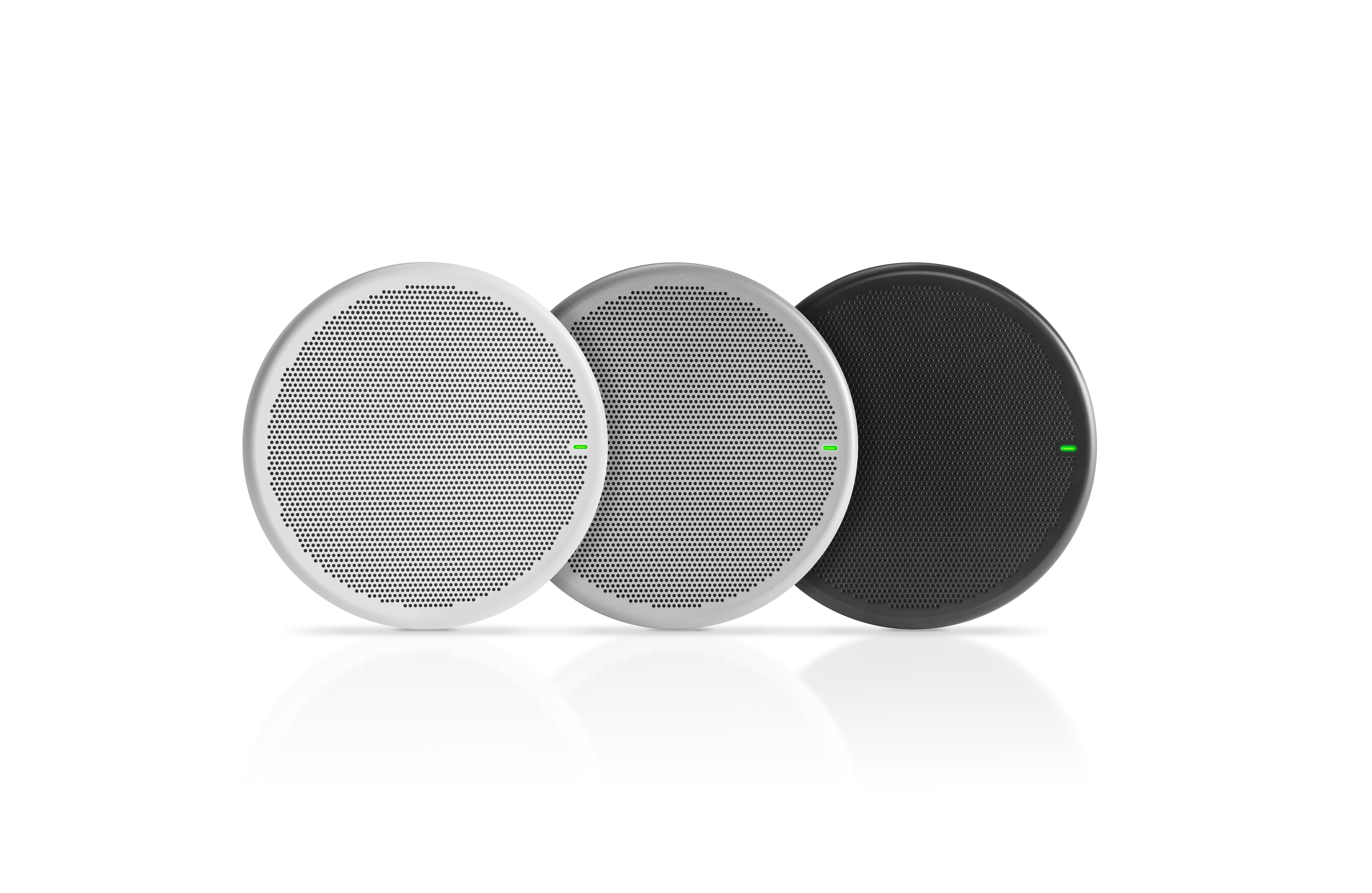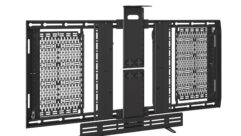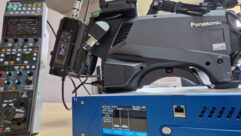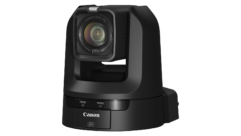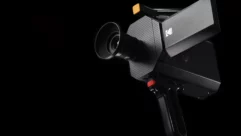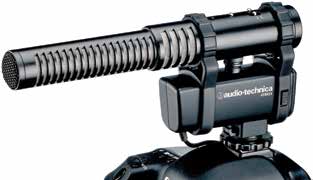

Built for use with DLSR and various video cameras featuring an integral “shoe mount” for traditional flash attachments and the like, AudioTechnica’s AT8024 is an AA battery-powered condenser microphone providing selectable mono or stereo recording modes, complete with a consumer tech-friendly 3.5 mm stereo mini-plug output connector via permanently attached cable.
For those who specialize in A/V content creation and management or simply want a better microphone to capture video-paired live audio in the field, the AT8024 is a simple, great-sounding pro-capable tool, arguably rivaling the capabilities of A-T’s pro-grade XLR-outfitted condenser microphones, for only $249 street.
Features of the AT8024 include line cardioid (“shotgun” style) and mid/side (M/S) left-right stereo polar patterns, switchable via a three-position toggle atop and near the rear of its shotgun mic barrel; adjacent are two additional toggles for switching between flat and a 80 Hz high-pass filter (HPF) and a three-position attenuator switch (0 dB, -10 dB and -20 dB), respectively. A red/green LED is provided, too; it glows green with sufficient power and red when the battery is low. The AT8024 handles loud audio content well with its 128 dB maximum SPL capability (1 kHz at 1% THD).
Dual rubber shock mounts isolate the AT8024’s barrel from its battery compartment/shoe mount, which minimizes movement noise notably well. Two useful windscreens are also included: a thick foam version with Audio-Technica logo and a fuzzy, “dead cat” version (that tends to shed, but works well regardless).
In mono mode, the AT8024 shines in noisy environments where off-axis rejection is preferred, thanks to its line cardioid design. [Line, or “shotgun”, mics utilize an interference tube before the element for this desired cancellation of off-axis sound—Ed.] Whether recording live spoken word interviews or solo musical sound sources, the AT8024 was such a notable improvement over my Nikon DLSR’s built-in microphone that it meant the difference between pro-level audio and amateurish results. With a relatively flat frequency response of 40 Hz to 15 kHz and an approximately 3-5 kHz, +5 dB “bump,” the AT8024 provides just the right amount of realistic transduction and vocal-friendly forwardness to be useful in most applications.
In stereo mode, the AT8024’s internally-matrixed mid-side stereo provides a wide stereo image–wider, for example, than what is possible when using an X/Y technique, whether via an X/Y stereo microphone or while using an X/Y set-up with two cardioid microphones angled at 90 degrees. In a variety of settings–a loud gymnasium capturing a basketball game, a close-up capture of an acoustic guitar solo performance, and more–adjusting the physical distance from a given sound source provided a wide range of ambient to tighter stereo content, all of which were balanced and realistic.
